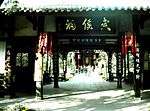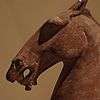Zhuge Liang
Zhuge Liang ([ʈʂú.kɤ̀ ljâŋ] (![]()
Zhuge Liang | |
|---|---|
諸葛亮 | |
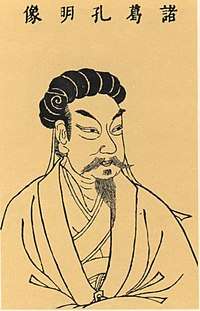 An illustration of Zhuge Liang in the Sancai Tuhui (1609) | |
| Imperial Chancellor (丞相) of Shu Han | |
| In office 229 – 234 | |
| In office 221 – 228 | |
| Monarch | Liu Bei / Liu Shan |
| General of the Right (右將軍) | |
| In office 228 – 229 | |
| Monarch | Liu Shan |
| Governor of Yi Province (益州牧) | |
| In office 223 – 234 | |
| Monarch | Liu Shan |
| Colonel-Director of Retainers (司隸校尉) | |
| In office 221 – 234 | |
| Monarch | Liu Bei / Liu Shan |
| Preceded by | Zhang Fei |
| Manager of the Affairs of the Masters of Writing (錄尚書事) | |
| In office 221 – 234 | |
| Monarch | Liu Bei / Liu Shan |
| Military Advisor General (軍師將軍) (under Liu Bei) | |
| In office 214 – ? | |
| Monarch | Emperor Xian of Han |
| Military Advisor General of the Household (軍師中郎將) (under Liu Bei) | |
| In office 208 – ? | |
| Monarch | Emperor Xian of Han |
| Personal details | |
| Born | 181 Yangdu County, Langya Commandery, Han Empire (present-day Yinan County, Shandong) |
| Died | 234 (aged 54)[1] Wuzhang Plains, border of Shu Han and Cao Wei (present-day Qishan County, Shaanxi) |
| Resting place | Mount Dingjun, Shaanxi |
| Spouse(s) | Lady Huang |
| Children |
|
| Father | Zhuge Gui |
| Relatives |
|
| Occupation | Politician, military strategist, writer, engineer, inventor |
| Courtesy name | Kongming (孔明) |
| Posthumous name | Marquis Zhongwu (忠武侯) |
| Peerage | Marquis of Wu District (武鄉侯) |
| Nickname(s) | "Crouching Dragon" (臥龍 / 伏龍) |
| Zhuge Liang | |||||||||||||||||||||||||||||||||||||||||||
|---|---|---|---|---|---|---|---|---|---|---|---|---|---|---|---|---|---|---|---|---|---|---|---|---|---|---|---|---|---|---|---|---|---|---|---|---|---|---|---|---|---|---|---|
| Traditional Chinese | 諸葛亮 | ||||||||||||||||||||||||||||||||||||||||||
| Simplified Chinese | 诸葛亮 | ||||||||||||||||||||||||||||||||||||||||||
| Hanyu Pinyin | PRC Standard Mandarin: ROC Standard Mandarin: Zhūgé Liàng | ||||||||||||||||||||||||||||||||||||||||||
| |||||||||||||||||||||||||||||||||||||||||||
| Kongming (courtesy name) | |||||||||||||||||||||||||||||||||||||||||||
| Chinese | 孔明 | ||||||||||||||||||||||||||||||||||||||||||
| Hanyu Pinyin | Kǒngmíng | ||||||||||||||||||||||||||||||||||||||||||
| |||||||||||||||||||||||||||||||||||||||||||
| Part of a series on |
| Chinese legalism |
|---|
 |
|
Texts
|
|
Derivatives |
|
Early figures |
|
Founding figures |
|
Later figures |
Zhuge Liang was a Confucian-oriented[5] "Legalist".[6] He liked to compare himself to the sage minister Guan Zhong,[6] developing Shu's agriculture and industry to become a regional power.[7] and attached great importance to the works of Shen Buhai and Han Fei,[8] refusing to indulge local elites and adopting strict, but fair and clear laws. In remembrance of his governance, local people maintained shrines to him for ages.[9]
Zhuge is a two-character Chinese compound family name. His name – even his surname alone – has become synonymous with loyalty, intelligence and strategy in Chinese culture.
Early life
Zhuge Liang was born in 181 in Yangdu County, Langya Commandery (present-day Yishui, Shandong Province).[10] As his father Zhuge Gui died when he was still young, he was raised by Zhuge Xuan (a cousin of Zhuge Gui) in Yuzhang Commandery. When Zhuge Xuan was driven out of Yuzhang Commandery in 195, Zhuge Liang followed Zhuge Xuan to live with his friend, Liu Biao, the governor of Jing Province.[11]
Zhuge Liang grew to be a tall man (≈189 cm). He enjoyed reciting Liangfu Yin (梁父吟), a folk song popular in Shandong, his birthplace. He had a habit of comparing himself to the sage minister Guan Zhong and military leader Yue Yi. Although few people took him seriously, Zhuge Liang developed close friendships with influential members of the local literati such as Xu Shu, Cui Zhouping, Meng Jian and Shi Tao. Zhuge Liang also maintained close relations with other well-known intellectuals such as Sima Hui, Pang Degong and Huang Chengyan. Huang Chengyan once told Zhuge Liang, "I heard that you're seeking a spouse. I've an ugly daughter with yellow skin and dark complexion, but her talent matches yours."[12] Zhuge Liang agreed and married Huang Chengyan's daughter. Sima Hui compared Zhuge Liang to a sleeping dragon.[11]
Service under Liu Bei
.jpg)
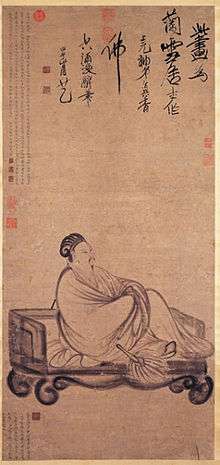
When Liu Bei was residing at Xinye County and taking shelter under Jing Province's governor, Liu Biao, he visited Sima Hui, who told him, "Confucian academics and common scholars, how much do they know about current affairs? Those who analyse current affairs well are elites. Crouching Dragon and Young Phoenix are the only ones in this region."[13] Xu Shu later recommended Zhuge Liang to Liu Bei again, and Liu wanted to ask Xu to invite Zhuge to meet him. However, Xu Shu replied, "You must visit this man in person. He cannot be invited to meet you."[14] Liu Bei succeeded in recruiting Zhuge Liang in 207 after paying three personal visits. This is contradicted in the later Annotations by Pei Songzhi which claim Zhuge Liang visited him first.[15][lower-alpha 1] Zhuge Liang presented the Longzhong Plan to Liu Bei and left his residence to follow Liu. Afterwards, Liu Bei became very close to Zhuge Liang and often had discussions with him. Guan Yu and Zhang Fei were displeased with their relationship and complained about it. Liu Bei explained, "Now that I have Kongming, I am like a fish that has found water. I hope you'll stop making unpleasant remarks."[16] Guan Yu and Zhang Fei then stopped complaining.
As a diplomat
In 208, Liu Biao died and was succeeded by his younger son, Liu Cong, who surrendered Jing Province to Cao Cao. When Liu Bei heard of Liu Cong's surrender, he led his followers (both troops and civilians) on an exodus southward to Xiakou, engaging Cao Cao's forces in a brief skirmish at the Battle of Changban along the way. While in Xiakou, Liu Bei sent Zhuge Liang to follow Lu Su to Jiangdong to discuss the formation of an alliance between him and Sun Quan.
Zhuge Liang met Sun Quan in Chaisang and proposed two solutions to him, "If you can use the forces of Wuyue to resist the central government, why not break ties (with Cao Cao) in advance? If you cannot oppose, why not demobilise the troops, discard your armour and surrender to the north?"[17] After Sun Quan's viceroy, Zhou Yu, analysed the situation and pointed out weaknesses in Cao Cao's army, Sun finally agreed to ally with Liu Bei in resisting Cao Cao. Zhuge Liang returned to Liu Bei's camp with Sun Quan's envoy, Lu Su, to make preparation for the upcoming war.
As a logistics officer
In late 208, the allied armies of Liu Bei and Sun Quan scored a decisive victory over Cao Cao's forces at the Battle of Red Cliffs. Cao Cao retreated to Ye city, while Liu Bei proceeded to conquer territories in Jiangnan, covering most of southern Jing Province. Zhuge Liang was appointed Military Advisor General of the Household (軍師中郎將). He was put in charge of governing Lingling (present day Yongzhou, Hunan), Guiyang and Changsha commanderies and collecting taxes to fund the military.
In 211, Liu Zhang, governor of Yi Province (covering present-day Sichuan and Chongqing), requested aid from Liu Bei in attacking Zhang Lu in Hanzhong Commandery. Liu Bei left Zhuge Liang, Guan Yu, Zhang Fei and others in charge of Jing Province while he led an army into Yi Province. Liu Bei promptly agreed to Liu Zhang's proposal, but secretly planned to take over Liu Zhang's land. The following year, Liu Zhang discovered Liu Bei's intention, and the two turned hostile and waged war on each other. Zhuge Liang, Zhang Fei and Zhao Yun led separate forces to reinforce Liu Bei in the attack on Yi Province's capital, Chengdu, while Guan Yu stayed behind to guard Jing Province. In 214, Liu Zhang surrendered and Liu Bei took control of Yi Province.
Liu Bei appointed Zhuge Liang as Military Advisor General (軍師將軍) and let him administer affairs of his personal office (office of the General of the Left (左將軍)). Whenever Liu Bei embarked on military campaigns, Zhuge Liang remained to defend Chengdu and ensured a steady flow of supply of troops and provisions. In 221, in response to Cao Pi's usurping of Emperor Xian's throne, Liu Bei's subordinates advised him to declare himself emperor. After initially refusing, Liu Bei was eventually persuaded by Zhuge Liang to do so and became ruler of Shu Han. Liu Bei named Zhuge Liang his chancellor and put him in charge of the imperial agency where Zhuge assumed the functions of the head of the imperial secretariat. Zhuge Liang was appointed Colonel-Director of Retainers (司隸校尉) after Zhang Fei's death.
Service under Liu Shan
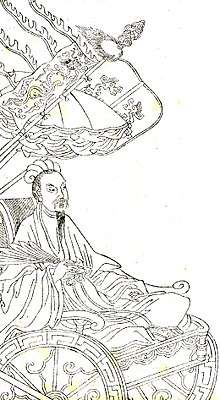
In the spring of 223, Liu Bei retreated to Yong'an (present-day Fengjie County, Chongqing) after his defeat at the Battle of Xiaoting and became seriously ill. He summoned Zhuge Liang from Chengdu and said to him, "You're ten times more talented than Cao Pi, and capable of both securing the country and accomplishing our great mission. If my son can be assisted, then assist him. If he proves incompetent, then you may take over the throne."[18] Zhuge Liang replied tearfully, "I'll do my utmost and serve with unwavering loyalty until death."[19] Liu Bei then ordered his son, Liu Shan, to administer state affairs together with Zhuge Liang and regard Zhuge as his father.
As a regent
After Liu Bei's death, Liu Shan ascended to the throne of Shu Han. He granted Zhuge Liang the title "Marquis of Wu District" (武鄉侯) and created an office for him. Not long later, Zhuge Liang was appointed governor of Yi Province and put in charge of all state affairs. At the same time, the commanderies in Nanzhong rebelled against Shu, but Zhuge Liang did not send troops to suppress the revolt as Liu Bei's death was still recent. Liu Bei had been persuaded after his defeat by Lu Xun that an alliance with Wu was necessary. Zhuge sent Deng Zhi and Chen Zhen to make peace with Eastern Wu and reentered an alliance with Wu. Zhuge Liang would consistently send envoys to Wu to improve diplomatic relations between the two states.
Southern Campaign

During his reign as regent, Zhuge Liang set Shu's objective as the restoration of the Han dynasty, which, from Shu's point of view, had been usurped by the state of Cao Wei. He felt that in order to attack Wei, a complete unification of Shu was first needed.[20] Zhuge Liang was worried that the local clans would work with the Nanman tribes in Nanzhong to stage a revolt. Fearing the possibility that the peasants might rebel and press into areas surrounding the capital Chengdu while he was attacking Wei in the north, Zhuge Liang decided to pacify the southern tribes first.
In the spring of 225, regional clans, including Yong, Gao, Zhu and Meng, had taken control of some cities in the south, so Zhuge Liang led an expedition force to Nanzhong. Ma Su proposed that they should attempt to win the hearts of the Nanman and rally their support instead of using military force to subdue them. Zhuge Liang heeded Ma Su's advice and defeated the rebel leader, Meng Huo, on seven occasions, as it was claimed in later histories such as the Chronicles of Huayang. He released Meng Huo each time in order to achieve Meng's genuine surrender.[21] The story about Meng Huo's seven captures is recently questioned by many modern academics, including historians such as Miao Yue, Tan Liangxiao, and Zhang Hualan.
Realising he had no chance to win, Meng Huo pledged allegiance to Shu, and was appointed by Zhuge Liang as governor of the region to keep the populace content and secure the southern Shu border. This would ensure that the future Northern Expeditions would proceed without internal disruptions.[20] Rich and abundant resources acquired from Nanzhong were used to fund Shu's military and the state became more prosperous.
Northern Expeditions and death

After pacifying the Nanman, Zhuge Liang ordered the Shu military to make preparations for a large scale offensive on Wei. In 227, while in Hanzhong, he wrote a memorial, titled Chu Shi Biao, to Liu Shan, stating his rationale for the campaign and giving advice to the emperor on good governance. From 228 until his death in 234, Zhuge Liang launched a total of five Northern Expeditions against Wei, all except one of which failed. During the first Northern Expedition, Zhuge Liang persuaded Jiang Wei, a young Wei military officer, to surrender and defect to his side.[22] Jiang Wei became a prominent general of Shu later and continued Zhuge Liang's legacy of an aggressive foreign policy against Wei. The other permanent gains by Shu were the conquests of the impoverished Wudu and Yinping commanderies, as well as the relocation of Wei citizens to Shu territories on occasion.[22]
In the spring of 231, Zhuge Liang finally met his nemesis, Sima Yi (the newly appointed Wei commander), at the Battle of Mount Qi, the deadliest campaign of the five expeditions in terms of death toll. In late 234, Zhuge Liang and Sima Yi reached a stalemate at the Battle of Wuzhang Plains. Straining his energy on military matters big and small, Zhuge Liang fell seriously ill and eventually died in camp at the age of 53. Before his death, Zhuge Liang recommended Jiang Wan and Fei Yi to succeed him as regent of Shu. He was buried on Mount Dingjun according to his dying wish and posthumously granted the title "Marquis Zhongwu" (忠武侯; literally "loyal and martial marquis") by Liu Shan.
Family and descendants
Zhuge Liang's ancestor, Zhuge Feng (諸葛豐), served as the Colonel-Director of Retainers during the reign of Emperor Yuan of the Han dynasty. Zhuge Liang's father, Zhuge Gui (諸葛珪), served as an assistant officer in Mount Tai Commandery in the late Han dynasty. Zhuge Liang's cousin-uncle, Zhuge Xuan, who raised Zhuge Liang and Zhuge Jun, served as the Administrator of Yuzhang Commandery before serving under Liu Biao, the Governor of Jing Province.
Zhuge Liang had an elder brother, a younger brother, and two elder sisters. His elder brother, Zhuge Jin, served under the warlord Sun Quan and later in the state of Eastern Wu. His younger brother, Zhuge Jun (諸葛均), served in the state of Shu Han. One of Zhuge Liang's sisters married Pang Shanmin, a cousin of Pang Tong, while the other sister married a member of the prominent Kuai family headed by Kuai Liang and Kuai Yue in Xiangyang Commandery.
Zhuge Liang married the daughter of Huang Chengyan. She was a maternal niece of Liu Biao and Lady Cai because her mother (Huang Chengyan's wife) was Lady Cai's younger sister. Although her name was not recorded in history, she is commonly referred to by the name "Huang Yueying" in popular culture.
Zhuge Liang had at least two sons. His elder son, Zhuge Zhan, served as a general in Shu and was killed in action during the Conquest of Shu by Wei. His younger son, Zhuge Huai (諸葛懷), lived as a commoner during the Jin dynasty. Zhuge Liang initially had no sons, so he adopted his nephew, Zhuge Qiao (Zhuge Jin's son). Zhuge Qiao served in Shu and died at a relatively young age. According to legend, Zhuge Liang had a daughter, Zhuge Guo (諸葛果), but her existence is disputed by historians.
Zhuge Qiao's son, Zhuge Pan (諸葛攀), returned to Eastern Wu after Zhuge Ke's death to continue Zhuge Jin's family line there. Zhuge Zhan had three sons. The eldest, Zhuge Shang, served Shu and was killed in action together with his father. The second, Zhuge Jing (諸葛京), moved to Hedong Commandery in 264 with Zhuge Pan's son, Zhuge Xian (諸葛顯), and came to serve the Jin dynasty later. The youngest was Zhuge Zhi (諸葛質).
Zhuge Dan, one of Zhuge Liang's cousins, served in the state of Cao Wei and masterminded the third of the Three Rebellions in Shouchun. He was killed after his defeat.
Legacy
Inventions
Although the invention of the repeating crossbow has often been attributed to Zhuge Liang, he had nothing to do with it. This misconception is based on a record attributing improvements to the multiple bolt crossbows to him.[23]
Zhuge Liang is also credited with constructing the Stone Sentinel Maze, an array of stone piles that is said to produce supernatural phenomena, located near Baidicheng.[24]
An early type of hot air balloon used for military signalling, known as the Kongming lantern, is also named after him.[25] It was said to be invented by Zhuge Liang when he was trapped by Sima Yi in Pingyang. Friendly forces nearby saw the message on the lantern paper covering and came to Zhuge Liang's aid. Another belief is that the lantern resembled Zhuge Liang's headdress, so it was named after him.
Literary works
Some books popularly attributed to Zhuge Liang can be found today. For example, the Thirty-Six Stratagems, and Mastering the Art of War (not to be confused with Sun Tzu's The Art of War) are two commonly available works attributed to Zhuge Liang. Supposedly, his mastery of infantry and cavalry formation tactics, based on the Taoist classic I Ching, were unrivalled. His memorial, the Chu Shi Biao, written prior to the Northern Expeditions, provided a salutary reflection of his unwavering loyalty to the state of Shu.[26] The memorial moved some readers to tears. In addition, he wrote Admonition to His Son (諸葛亮誡子書) in which he reflected on his humbleness and frugality in pursuit of a meaningful life.[27]
Zhuge Liang is also the subject of many Chinese literary works. A poem by Du Fu, a prolific Tang dynasty poet, was written in memory of Zhuge Liang whose legacy of unwavering dedication seems to have been forgotten in Du Fu's generation (judging by the description of Zhuge Liang' unkept temple). Some historians believe that Du Fu had compared himself with Zhuge Liang in the poem. The full text is:
| 蜀相 (武侯祠)
丞相祠堂何處尋? |
Premier of Shu (Temple of the Marquis of Wu)
Where to seek the temple of the noble Premier? |
Du Fu's quatrain "Eightfold Battle Formation" (八陈图) about Zhuge Liang's Stone Sentinel Maze, is collected in the Three Hundred Tang Poems.
Notable quotes
The phrase "The Han and the Evil do not stand together" (simplified Chinese: 汉贼不两立; traditional Chinese: 漢賊不兩立; pinyin: Hàn zéi bù liǎng lì) from the Later Chu Shi Biao is often used to draw a line in the sand and declare a situation where one cannot stand with evil. Notably, this phrase was Generalissimo Chiang Kai-shek's favorite quote to invoke to justify his anti-communism ideology.
Another phrase "with deference and prudence, to the state of one's depletion; it's never finished until one's death" (simplified Chinese: 鞠躬尽瘁,死而后已; traditional Chinese: 鞠躬盡瘁,死而後已; pinyin: jū gōng jìn cuì, sǐ ér hòu yǐ) from the Later Chu Shi Biao is often used to describe one's commitment and perseverance to strive to the utmost.
One famous line of poem, "Who is the first, awakened from the Great Dream? As always, I'm the one who knows." (simplified Chinese: 大梦谁先觉?平生我自知.; traditional Chinese: 大夢誰先覺?平生我自知.; pinyin: dà mèng shuí xiān jué ? píng shēng wǒ zì zhī), was also attributed to Zhuge Liang.
"Without modest simplicity, one cannot brighten volition; Without tranquility and serenity, one cannot reach far" (simplified Chinese: 非淡泊无以明志,非宁静无以致远; traditional Chinese: 非淡泊無以明志,非寧靜無以致遠), a well-known maxim authored by Zhuge Liang, has been popular in educational institutions in China for thousands of years.
In Romance of the Three Kingdoms
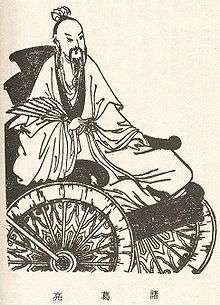
The wisdom of Zhuge Liang was popularised by the historical novel Romance of the Three Kingdoms, written by Luo Guanzhong during the Ming dynasty. In it, Zhuge Liang is described to be able to perform fantastical achievements such as summoning advantageous winds and devising magical stone mazes.
There is great confusion on whether the stories are historical or fictional. At least, the Empty Fort Strategy is based on historical records, albeit not attributed to Zhuge Liang historically.[3] For Chinese people, the question is largely irrelevant, as the Zhuge Liang of lore is regardless seen as a mastermind, whose examples continue to influence many layers of Chinese society. They are also argued, together with Sun Tzu's The Art of War, to still greatly influence the modern Chinese strategical, military and everyday thinking.[3]
See the following for the stories in Romance of the Three Kingdoms involving Zhuge Liang.
- Three visits to the thatched cottage
- Battle of Bowang
- Zhuge Liang's diplomatic mission to Jiangdong
- Borrowing arrows with straw boats
- Zhuge Liang prays for the eastern wind
- Battle of Jiameng Pass
- Battle of Xiaoting
- Meng Huo captured and released seven times
- Empty fort strategy
Events before Zhuge Liang's death
When Zhuge Liang fell critically ill during the Battle of Wuzhang Plains, he attempted to extend his lifespan by 12 years through a ritual. However, he failed when the ritual was disrupted by Wei Yan, who rushed in to warn him about the enemy's advance.[28] Before his death, Zhuge Liang also passed his 24 Volumes on Military Strategy (兵法二十四篇) to Jiang Wei,[lower-alpha 2] who would continue his legacy and lead another eleven campaigns against the state of Cao Wei.(曹魏)
Worship of Zhuge Liang
There are many temples and shrines built to commemorate Zhuge Liang. Some of the most famous ones include the Temple of the Marquis of Wu in Chengdu, and the Temple of the Marquis of Wu in Baidicheng.
In 760, when Emperor Suzong of the Tang dynasty built a temple to honour Jiang Ziya, he had sculptures of Zhuge Liang and another nine famous historical military generals/strategists – Bai Qi, Han Xin, Li Jing, Li Shiji, Zhang Liang, Tian Rangju, Sun Tzu, Wu Qi and Yue Yi – placed in the temple flanking Jiang Ziya's statue.[30]
Zhuge Liang is also sometimes venerated as a door god at Chinese and Taoist temples, usually in partnership with Sima Yi of Wei.
In popular culture
Film and television
Notable actors who have portrayed Zhuge Liang in film and television include: Adam Cheng, in The Legendary Prime Minister – Zhuge Liang (1985); Li Fazeng, in Zhuge Liang (1985); Tang Guoqiang, in Romance of the Three Kingdoms (1994); Pu Cunxin, in Three Kingdoms: Resurrection of the Dragon (2008); Takeshi Kaneshiro, in Red Cliff (2008–09); Lu Yi, in Three Kingdoms (2010); Raymond Lam, in Three Kingdoms RPG (2012); Wang Luoyong, in The Advisors Alliance (2017).
Video games
Zhuge Liang's reputation for being an unparalleled genius is also emphasised in his portrayal in video games. Reflecting his status as the most highly regarded strategist in Romance of the Three Kingdoms, games such as Destiny of an Emperor and Koei's Romance of the Three Kingdoms game series place Zhuge Liang's intelligence statistic as the highest of all characters. He is also a playable character in Koei's Dynasty Warriors, Dynasty Tactics and Kessen II. He also appears in Warriors Orochi, a crossover between Dynasty Warriors and Samurai Warriors.
Zhuge Liang is the protagonist in Koei's tactical role-playing game Sangokushi Koumeiden, where he can die at the Battle of Wuzhang Plains, as he did historically, or proceed to restore the Han dynasty under Emperor Xian.
Zhuge Liang appears in the turn-based strategy games Civilization IV and Civilization V as a great general along with Cao Cao.
Zhuge Liang appears as two separate spirits in the game Destiny of Spirits.
Zhuge Liang appears in at least two forms in the mobile game Puzzle & Dragons.
Zhuge Liang appears as a summonable Pseudo-Servant in the mobile game Fate/Grand Order, with most of his skills portraying him as a skilled tactician.
Zhuge Liang is featured in the sequel to Level-5's game and anime Inazuma Eleven GO 2: Chrono Stone, as well as Cao Cao, Liu Bei, Guan Yu and Zhang Fei. Notably, both adaptations portray Zhuge Liang as a woman.
Zhuge Liang is a legendary strategist in Creative Assembly's turn-based strategy game Total War: Three Kingdoms.
Zhuge Liang appears as a playable character in a mobile game Honkai Impact 3rd portrayed as a woman and being a powerful support
Zhuge Liang is the fable hero of scholar class in the mobile game Royal Chaos, where he deals great amount of Area of Effect (AOE) damage as well as skilled in deployment.[31]
Notes
- Some other historical sources contradict this story, claiming that it was Zhuge Liang who visited Liu Bei first and offered his services. This account comes from the Weilue, quoted by Pei Songzhi in his annotations to Chen Shou's Sanguozhi, vol. 35, p. 913. See also Henry, Eric (December 1992). "Chu-ko Liang in the Eyes of his Contemporaries". Harvard Journal of Asiatic Studies. 52 (2): 593–96.
- In note 1 of chapter 104 – see p. 2189 – Roberts mentions the Zhuge Liang ji (AD 274, which Chen Shou compiled.[29]
References
Citations
- Zhuge Liang's biography in Records of the Three Kingdoms mentioned that he died at the age of 54 (by East Asian age reckoning) in the 8th month of the 12th year of the Jianxing era (223–237) in Liu Shan's reign. ([建興]十二年 ... 其年八月,亮疾病,卒于軍,時年五十四。) By calculation, his birth year should be around 181.
- de Crespigny, Rafe (2007). A biographical dictionary of Later Han to the Three Kingdoms (23–220 AD). Brill. p. 1172. ISBN 978-90-04-15605-0.
- Nojonen, Matti (2009). Jymäyttämisen taito. Strategiaoppeja muinaisesta Kiinasta [The Art of Deception. Strategy lessons from Ancient China. Helsinki, Finland: Gaudeamus. ISBN 978-952-495-089-3.
- "Ancient Cultivation Stories: Zhuge Liang's Cultivation Practise". ClearHarmony.net. 28 July 2005. Retrieved 11 November 2007.
- Baogang Guo 2008 p. 38. China in Search of a Harmonious Society. https://books.google.com/books?id=UkoStC-S-AMC&pg=PA38
- Dillon, Michael (1998). China: A Cultural and Historical Dictionary. p. 389.
- Deng, Yinke (2007). History of China. p. 65.
- Guo, Baogang (2008). China in Search of a Harmonious Society. p. 38.
- Auyang, Sunny (2015). The Dragon and the Eagle. p. 290.
- Knechtges (2014), p. 2329.
- de Crespigny (2007), p. 1172.
- (聞君擇婦;身有醜女,黃頭黑色,而才堪相配。) Sanguozhi vol. 35.
- (儒生俗士,豈識時務?識時務者為俊傑。此間自有卧龍、鳳雛。) Sanguozhi vol. 35.
- (此人可就見,不可屈致也。將軍宜枉駕顧之。) Sanguozhi vol. 35.
- "Zhuge Liang – Kong Ming, The Original Hidden Dragon". JadeDragon.com. Retrieved 11 November 2007.
- (孤之有孔明,猶魚之有水也。願諸君勿復言。) Sanguozhi vol. 35.
- (若能以吳、越之眾與中國抗衡,不如早與之絕﹔若不能當,何不案兵束甲,北面而事之!) Chen Shou. Records of Three Kingdoms, Volume 35, Biography of Zhuge Liang.
- (君才十倍曹丕,必能安國,終定大事。若嗣子可輔,輔之;如其不才,君可自取。) Sanguozhi vol. 35.
- (臣敢竭股肱之力,效忠貞之節,繼之以死!) Sanguozhi vol. 35.
- Zhuge, Liang; Zhang, Zhu; Duan, Xizhong; Wen, Xuchu (1960). 諸葛亮集 [Collected works of Zhuge Liang] (in Chinese). Beijing: Zhonghua Publishing. OCLC 21994628.
- Huang, Walter Ta (1967). Seven times freed. New York: Vantage Press. OCLC 2237071.
- Luo, Zhizhong (2003). 諸葛亮 (in Chinese). Taichung, Taiwan: Hao du chu ban you xian gong si. ISBN 978-957-455-576-5. OCLC 55511668.
- Needham (1994), p. 8.
- Zhuge Liang; Liu Ji; Thomas Cleary (1989). Mastering the art of war. Boston: Shambhala Publications. ISBN 978-0-87773-513-7. OCLC 19814956.
- Yinke Deng (2005). Ancient Chinese inventions. China Intercontinental Press. p. 113. ISBN 978-7-5085-0837-5.
Kongming balloon.
- "Zhuge Liang and the Qin". www.silkqin.com. Retrieved 21 November 2016.
- "Tranquility_Aspiration". Vincent's Calligraphy. Retrieved 21 November 2016.
- Luo, Guanzhong (2007). Three Kingdoms: A Historical Novel: Volume IV. Translated by Roberts, Moss. Beijing: Foreign Languages Press. pp. 1886–88. ISBN 978-7-119-00590-4.
- Luo, Guanzhong (2007). Three Kingdoms: A Historical Novel: Volume IV. Translated by Roberts, Moss. Beijing: Foreign Languages Press. p. 1889. ISBN 978-7-119-00590-4.
- (上元元年,尊太公為武成王,祭典與文宣王比,以歷代良將為十哲象坐侍。秦武安君白起、漢淮陰侯韓信、蜀丞相諸葛亮、唐尚書右僕射衛國公李靖、司空英國公李勣列於左,漢太子少傅張良、齊大司馬田穰苴、吳將軍孫武、魏西河守吳起、燕晶國君樂毅列於右,以良為配。) Xin Tang Shu vol. 15.
- "Royal Chaos - Enter A Dreamlike Kingdom of Romance". rc.wishgamer.com. Retrieved 8 November 2019.
Bibliography
- de Crespigny, Rafe (2007). "Zhuge Liang". A Biographical Dictionary of the Later Han to the Three Kingdoms (AD 23 – 220). Leiden: Brill. pp. 1172–73. ISBN 978-90-04-15605-0.CS1 maint: ref=harv (link)
- Knechtges, David R. (2014). "Zhuge Liang 諸葛亮". In Knechtges, David R.; Taiping, Chang (eds.). Ancient and Early Medieval Chinese Literature: A Reference Guide, Part Four. Leiden: Brill. pp. 2329–35. ISBN 978-90-04-27217-0.CS1 maint: ref=harv (link)
- Luo, Guanzhong (1976) [c. 1330]. Romance of the Three Kingdoms. Translated by Roberts, Moss. New York: Pantheon Books. ISBN 978-0-394-40722-7. OCLC 2331218.
- Off, Greg (2005). Dynasty Warriors 5: Prima Official Game Guide. Roseville, Ontario: Prima Games. ISBN 978-0-7615-5141-6. OCLC 62162042.
- Needham, Joseph (1994), Science and Civilization in China Volume 5 Part 6, Cambridge University Press
- Zhu, Dawei; Liang, Mancang (2007). 诸葛亮大传 [Story of Zhuge Liang] (in Chinese). Beijing: Zhonghua Publishing. ISBN 978-7-101-05638-9. OCLC 173263137.
External links
| Wikimedia Commons has media related to: |
| Wikiquote has quotations related to: Zhuge Liang |
- Zhuge Liang style-name Kongming A history of Zhuge Liang and his writings. Including a guide to historic sites in China connected with Zhuge Liang
- Works by Zhuge Liang at Project Gutenberg
- Works by or about Zhuge Liang at Internet Archive
